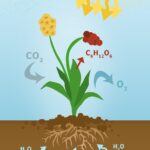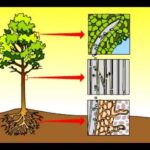Heat energy conversion in chemical reactions: Class 8 Science: Chapter 8
Heat energy conversion in chemical reactions is an essential aspect of chemistry. Chemical reactions that involve a change in temperature, whether endothermic or exothermic, can release or absorb heat energy. Heat energy can be converted into other forms of energy such as electrical, mechanical, or sound energy. In this paper, we will discuss heat energy conversion in chemical reactions and provide examples of chemical formulas.
Endothermic Reactions
Endothermic reactions are those reactions that require the absorption of heat energy to occur. These reactions usually take place in cold environments and are characterized by a decrease in temperature. The heat energy is absorbed by the reactants during the reaction and is converted into chemical energy. Examples of endothermic reactions include:
- The reaction between ammonium nitrate and water has the chemical equation:
NH4NO3 + H2O → NH4+ + NO3- + H2O (heat absorbed)
In this reaction, ammonium nitrate and water react to form ammonium and nitrate ions. The heat energy is absorbed by the reaction, resulting in a decrease in temperature.
- The reaction between baking soda and vinegar has the chemical equation:
NaHCO3 + CH3COOH → NaCH3COO + H2O + CO2 (heat absorbed)
In this reaction, baking soda and vinegar react to produce sodium acetate, water, and carbon dioxide. The heat energy is absorbed by the reaction, resulting in a decrease in temperature.
Exothermic Reactions
Exothermic reactions are those reactions that release heat energy as a byproduct. These reactions usually take place in warm environments and are characterized by an increase in temperature. The heat energy released during the reaction can be converted into other forms of energy such as electrical, mechanical, or sound energy. Examples of exothermic reactions include:
- The combustion of propane gas has the chemical equation:
C3H8 + 5O2 → 3CO2 + 4H2O (heat released)
In this reaction, propane gas and oxygen react to produce carbon dioxide and water. The heat energy is released during the reaction, resulting in an increase in temperature. The released heat energy can be used to generate electricity or heat buildings.
- The reaction between magnesium and oxygen, has the chemical equation:
2Mg + O2 → 2MgO (heat released)
In this reaction, magnesium and oxygen react to form magnesium oxide. The heat energy is released during the reaction, resulting in an increase in temperature. The released heat energy can be converted into other forms of energy such as electrical or mechanical energy.
Conclusion
In conclusion, heat energy conversion in chemical reactions is an essential aspect of chemistry. Endothermic reactions absorb heat energy while exothermic reactions release heat energy. The heat energy released during exothermic reactions can be converted into other forms of energy such as electrical, mechanical, or sound energy. Examples of endothermic reactions include the reaction between ammonium nitrate and water and the reaction between baking soda and vinegar. Examples of exothermic reactions include the combustion of propane gas and the reaction between magnesium and oxygen. Heat energy conversion in chemical reactions has many practical applications in various fields, including energy production, heating and cooling, and manufacturing.
Displacement Reaction: Class 8 Science : Chapter 8
অষ্টম শ্রেণির বিজ্ঞানের একাদশ অধ্যায় : চোখের প্রধান অংশ ও কাজ




















